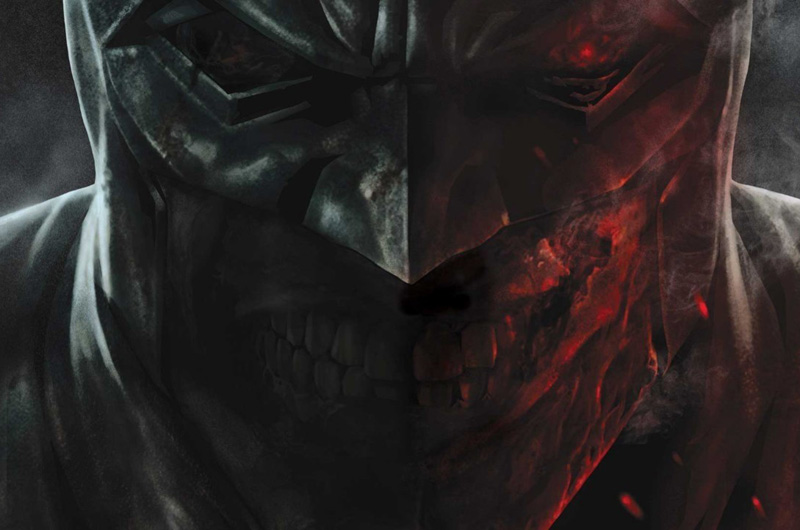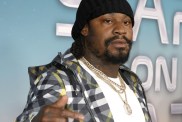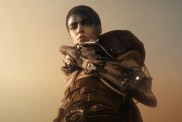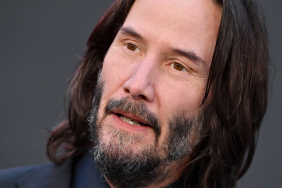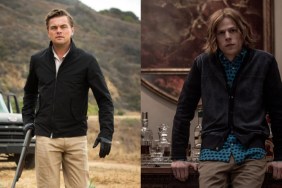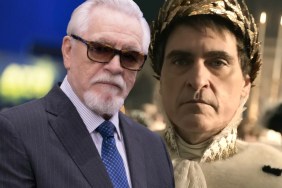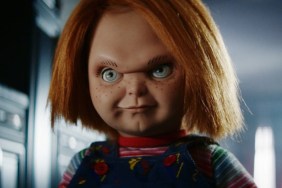DC Comics has provided ComingSoon.net with the chance to talk to the creative team behind this week’s Batman: Damned #1, Brian Azzarello and Lee Bermejo. Check out the full interview below, and click here for our exclusive sneak peek at the new limited series!
RELATED: Batman: Hush Animated Movie Leads DC Animation’s 2019 Slate
From writer Brian Azzarello and artist Lee Bermejo, the creative team behind 2008’s Joker, the bimonthly supernatural horror story Batman: Damned follows Batman and DC’s outlaw magician John Constantine as they hunt the truth of who killed The Joker through a Gotham City hellscape.
The Joker is dead. There is no doubt about that. But whether Batman finally snapped his scrawny neck or some other sinister force in Gotham City did the deed is still a mystery. Problem is, Batman can’t remember…and the more he digs into this labyrinthian case, the more his mind starts to doubt everything he’s uncovering. So who better to set him straight than…John Constantine? Problem with that is as much as John loves a good mystery, he loves messing with people’s heads even more. So with John’s “help,” the pair will delve into the sordid underbelly of Gotham as they race toward the mind-blowing truth of who murdered The Joker.
DC Black Label, a new publishing imprint from DC Entertainment, gives premier talent the opportunity to expand upon the canon of DC’s iconic Super Hero comic book characters with unique, standalone stories that are outside of the current DC Universe continuity. An all-star lineup of creative teams will craft their own personal definitive DC stories in the tradition of compelling literary works like Batman: The Killing Joke, DC: The New Frontier and Watchmen.
RELATED: Watch the Remastered Batman: The Animated Series Opening
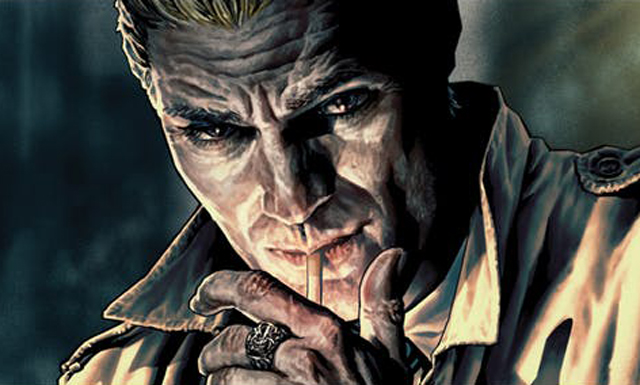
ComingSoon.net: The story pairs up Constantine and Batman. In recent years Constantine has had a bit of his edge shaved off so he could be more integrated into the mainstream DC titles and TV shows, but this book takes him back to his Vertigo roots. What do you think is the purest form of Constantine?
Brian Azzarello: The purest form of Constantine? “Swamp Thing.”
Lee Bermejo: Yeah, “Swamp Thing,” which was pre-Vertigo, actually.
Azzarello: Yeah, yeah. When he had the hair like Sting in “Dune.” It has that feel to it.
Bermejo: He would come in and shake things up and be a monkey wrench, a magical monkey wrench.
Azzarello: In “Swamp Thing.” And then, in Vertigo, he’s just the narrator of the magic odyssey and because I’m getting into his head it’s not very surprising. The character itself, once you’ve learned more about the monkey wrench, you know how it works. And so, we’re kind of going further with knowing who the monkey wrench is. Right now, Batman’s the monkey wrench in this.
CS: Right from the get-go the story portrays Batman in a way we rarely see him: Vulnerable. For a man with so many strengths, what do you think is the quickest way to weaken and cut to the core of Bruce Wayne?
Azzarello: He does not know what the fuck’s going on. It’s that simple. Put him in a situation where he doesn’t just have the answers, but he’s denying the truth.
Bermejo: Yeah, I think that’s a pretty human quality, too, his denial, and specifically he demands a very large set of blinders on him. He’s got tunnel vision, you know what I mean? Batman is not a character that—at least in my mind, and this is kind of what drives me crazy about all these different interpretations is this kind of—he always had answers and he’s unstoppable. And he’s eight moves ahead of everybody else. You know, he’s a psychotic individual, and I think that there’s a large amount of denial involved in his specific set of trauma.
CS: There’s always been this weirdly symbiotic relationship between Batman and The Joker, that somehow they’re two halves of the same coin, and that deep down one can’t live without the other. Is that something you’re going to explore in this story?
Bermejo: Could they live without each other? Yes, they can live without each other. Symbiotic relationship? I don’t know. I don’t know about that. I think the reaction—I think they are very specifically related in the sense that one reacts to the other, and yeah, I think that it’s fair to say that no one can get a reaction out of Batman like The Joker, and vice versa.
Azzarello: Oh yeah, no, I completely agree.
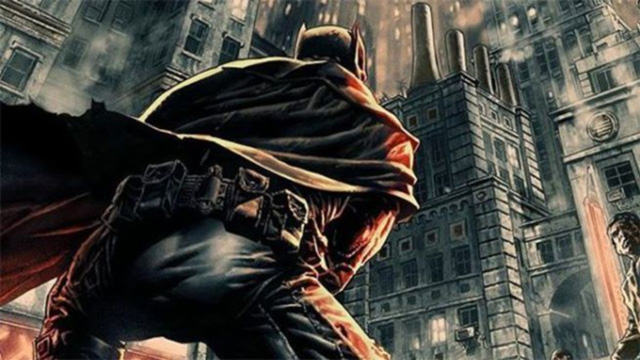
CS: I think so, yeah. In terms of the framing there’s a lot of extreme, high and low angles that accentuates Bruce’s anxiety. Is there ever a point where you’ve found you’ve pushed the style too far and have to reign it back, or does Gotham lend itself to these oppressive vistas?
Azzarello: I don’t know. I think that’s more of a question for Lee, because they had their own experiences. Some people get affected more than others by that kind of claustrophobia, but I personally like a world that’s closing in on Batman. I think that’s part of his psychosis. And I like that aspect is something that’s unavoidable.
Bermejo: I’mlooking at all the art right now. It’s on the wall. It’s a double-page spread that’s going to be in issue two of Gotham City. And Gotham City’s is the ultimate version of Gotham City.
CS: I kind of had the same feeling when I was reading the book. There’s one panel where Gotham City is so vast that it literally just blocks out the sky. That was really, really cool.
Bermejo: Right. Yeah, but again, it’s a book about perspective, you know? You’re going to see that in issue 2 and issue 3 a lot more, too, is that it’s rare to see things from Batman’s point of view. And I mean that like, literally, you’re in his eyes. You see a lot of Batman books where he’s the narrator and he’s controlling the story more, but you don’t get a lot of that where you’re actually—I mean, you know, just have him coming up out of the water, where he’s looking around. It’s blurry. And you know, there’s a lot of that kind of stuff in the book, where I really want to play around with almost being able to see this world in that same way. And that shot that you’re talking about, the purpose of that was just when you’re rolling on the ground and revealing Gotham City, the first big shot of the city you get, again, I want it to seem un-escapable. There’s no way out, it’s labyrinthine.
CS: Does Lee’s art ever inspire changes in the story you originally set down? Do you ever see maybe the rough pencils and something clicks in your head and you’re like, what if we change this or change this line or something like that?
Azzarello: Oh yeah, yeah, you mean like dialogue changes? Yes, yes. Yeah, of course it does.
CS: You have many of the key members of Justice League Dark in the first issue. Will the team play a part? Is that just kind of an outgrowth of the fact that it’s just a lot of the supernatural characters from the universe?
Azzarello: Yeah. Well, I mean, I think Lee and I both thought it doesn’t seem like they’re being used to their full potential. They try to make a team up of these characters. These are characters that don’t work teaming up with anybody. Listen, Dark means you’re a loner, all right?
Bermejo: Yeah, I definitely see that these kind of more supernatural characters, number one, they’re some of my favorites in this universe by far. But there’s also something about Batman being in this world that he completely does not understand. I mean, he’s all about logic and I mean, I hate to say it, but he’s supposed to be the main character, which is funny to say, but that’s supposed to be, at his core, something human, right? So it’s great to put him in his world that he really is the character who knows nothing about anything.
CS: Right. You have him out of his element.
Bermejo: Exactly.
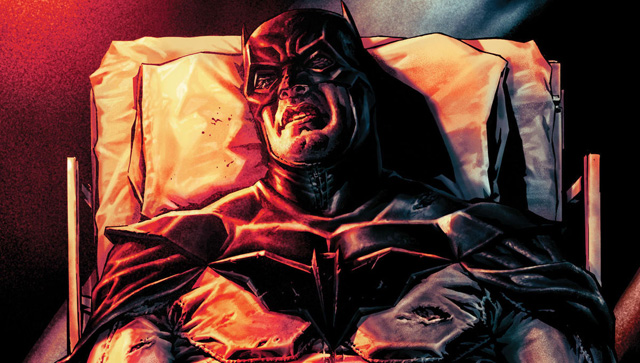
CS: The idea of a Black Label is kind of an extension of the Elseworlds concept. What is the appeal for you guys of being able to tell a story outside of continuity and for a more adult audience?
Azzarello: I think Black Label has nothing to do with Elseworlds. Nothing. And we are not trying to tell an Elseworlds story here. This is not Elseworlds.
Bermejo: Yeah, I think that everything we’ve done together pretty much has been a Black Label book, pretty much. And those books have been Elseworlds. I mean, we’ve been battling that book to a certain extent. None of those were technically Elseworld stories. They were just stories that I could give them to readers to figure out where they think they should fit and they do fit. I don’t think it’s our job, and personally, I don’t want to try to figure out how to morph something into fitting into the rest of the company. I would much prefer to find a compelling story using the true core of these characters, who these characters are, and then try to evolve them, try to make some characters feel more modern, try to make other characters feel more like the core of who they are. I think that mission statement more than anything is Black Label.
CS: Do you have ideas for other Black Label projects after this one?
Azzarello: Can we finish this one first? Yeah, I think the Black Label is the best place for us to be, for sure, just for various reasons. And I’ve kind of, like I said before, it’s kind of what I’ve always done. But yeah, I mean, I have built out something else for Black Label, but right now, I just have to finish this thing.
Batman: Damned #1 is available now at comic book retailers.
